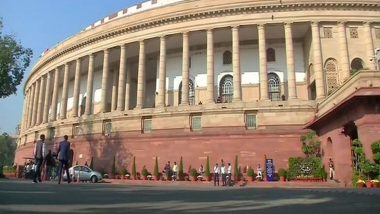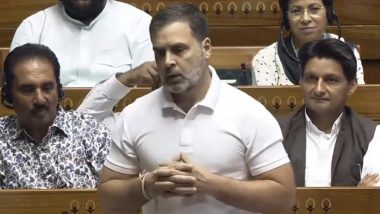New Delhi, December 16: Congress MP Ranjeet Ranjan on Friday gave a Suspension of Business Notice under Rule 267 in Rajya Sabha for a discussion on unemployment in the country.
In his letter to the General Secretary of Rajya Sabha, Ranjan wrote, "India is a country with maximum population of youth and 60 per cent of people in the age group of workers are unemployed. In the age group of 20-24 years, 42 per cent of people are unemployed. Unemployment is the highest in the last 45 years. As per data, unemployment is highest in a year at 8.3 per cent. Also, it is mostly impacting the women population. The participation of women in labour force has come down to 15 per cent from 26 per cent." India-China LAC Faceoff: Congress MP Manish Tewari Gives Adjournment Motion Notice in Lok Sabha for Detailed Discussion on Tawang Clashes.
Earlier on Thursday, Minister of State for Labour and Employment Rameswar Teli informed the Lok Sabha that the Periodic Labour Force Survey (PLFS) data has indicated that the unemployment rate is on the decline in the country.
The data on Employment and Unemployment was collated through the Periodic Labour Force Survey (PLFS) conducted by the Ministry of Statistics and Programme Implementation (MoSPI) since 2017-18. The survey period is from July, this year to June of next year.
As per the latest available Annual PLFS report, the estimated Unemployment Rate (UR) on usual status for persons aged 15 years and above, during 2018-19 to 2020-21, declined from 5 per cent to 3.3 per cent in the rural areas. Lok Sabha Speaker Om Birla Warns MPs, Says 'Never Refer to Anyone's Caste or Religion in House, Else Action Will Be Taken'.
The report further mentions that the estimated Unemployment Rate (UR) on usual status for persons aged 15 years and above, during 2018-19 to 2020-21, in the urban areas has seen a dip of 0.9 per cent. The figure is at 6.7 per cent for the financial year 2020-21, down from 7.6 per cent in 2018-19.
Cumulatively, the pan-India employment--unemployment data shows a drop of 1.3 per cent from the figure of 5.8 per cent in 2018-19, to 4.2 per cent in 2020-21.
(This is an unedited and auto-generated story from Syndicated News feed, LatestLY Staff may not have modified or edited the content body)













 Quickly
Quickly




















